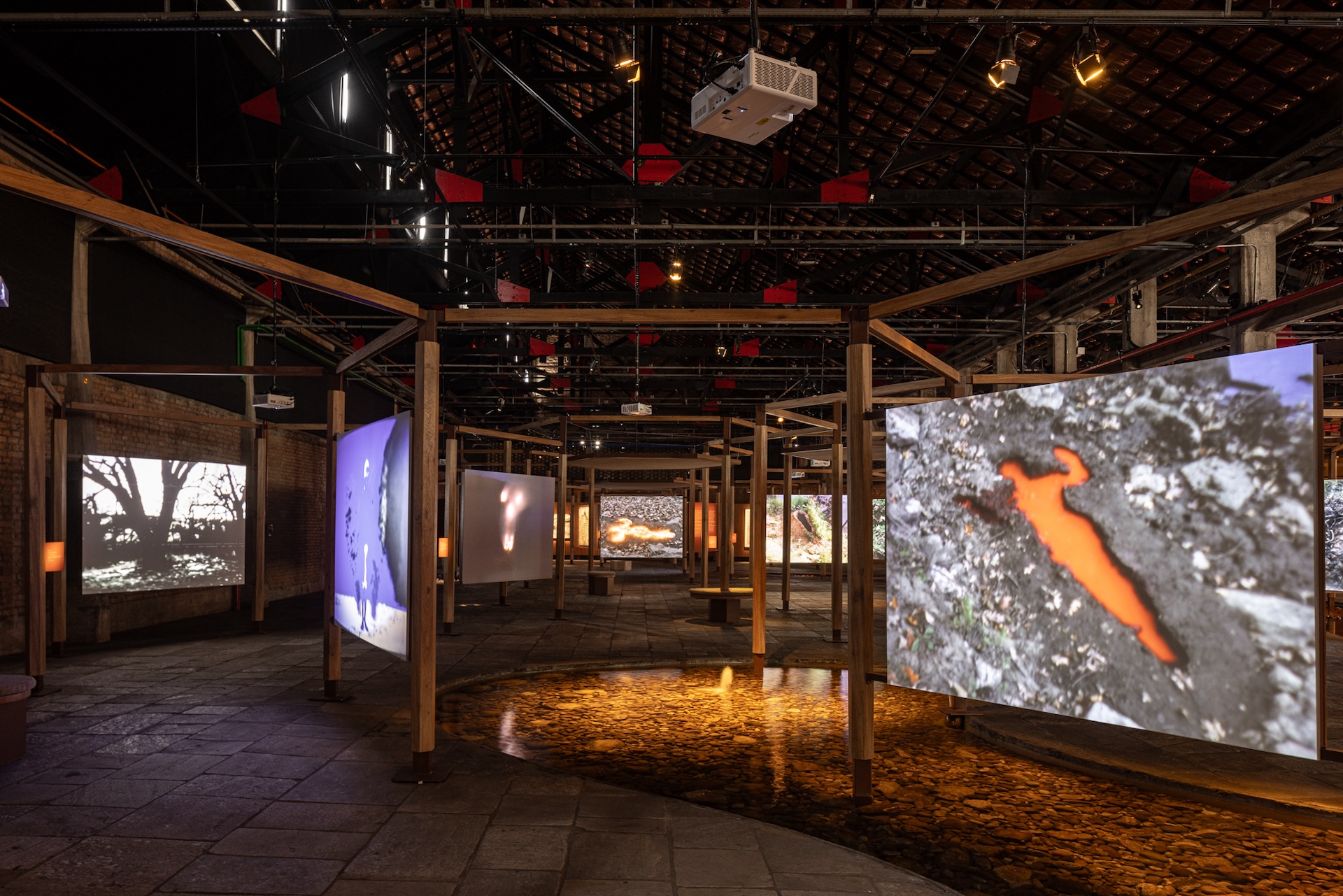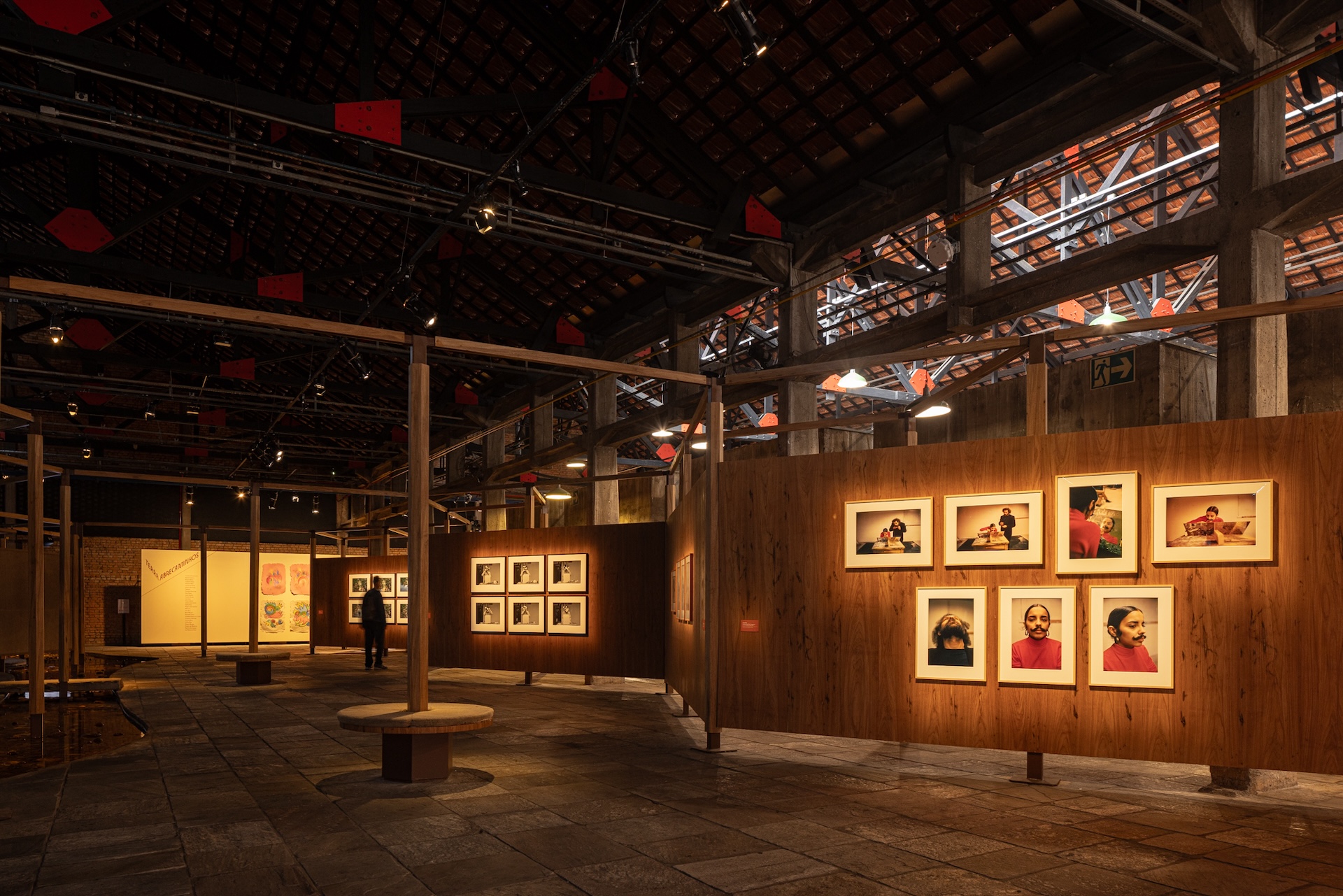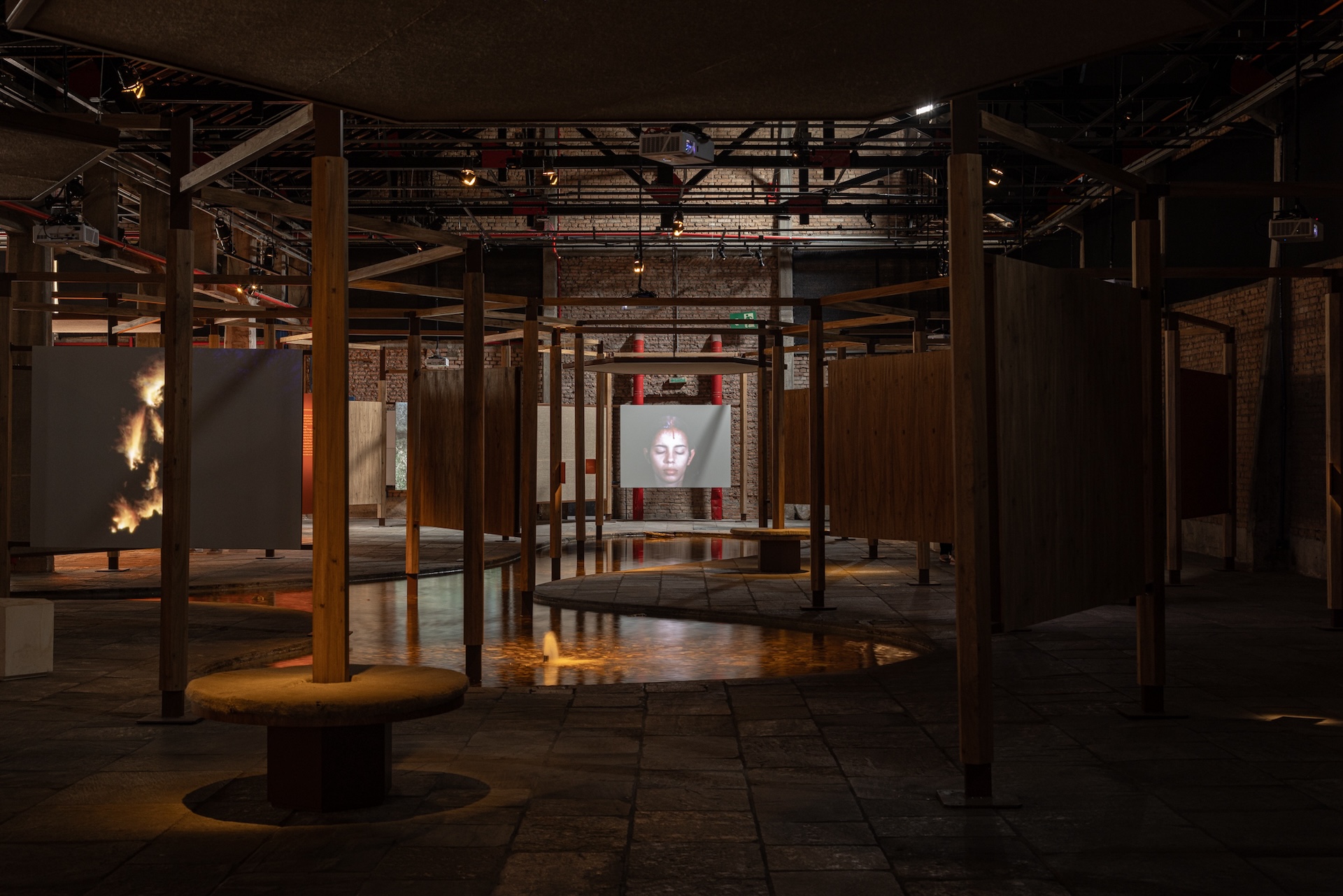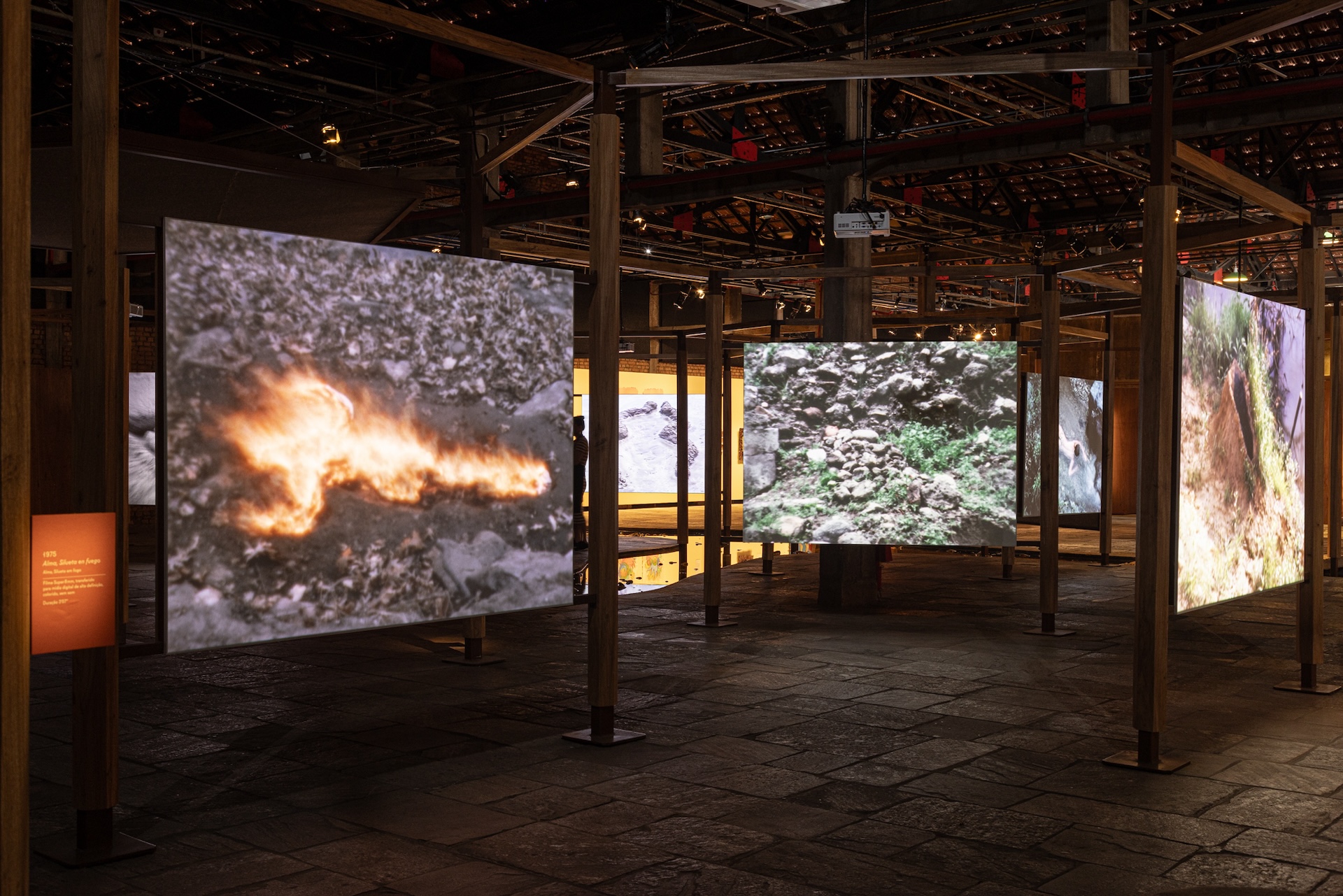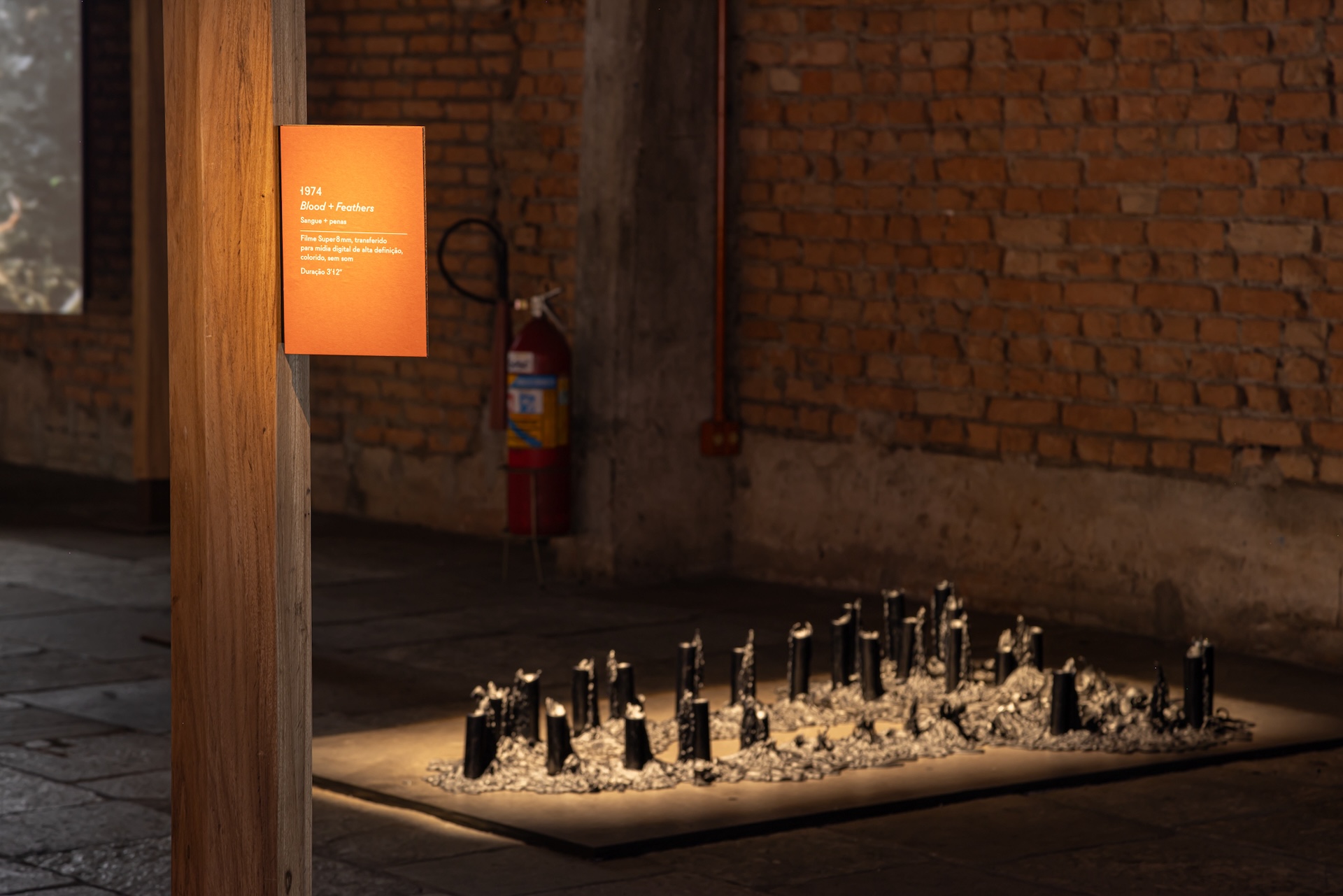Ana Mendieta | Silhueta em Fogo
Ana Mendieta | Silhueta em Fogo
SESC Pompeia, São Paulo, SP
2023
Executive Production
Curated by: Daniela Labra
“Fire has always been a magical thing for me” – Ana Mendieta
The historical exhibition Ana Mendieta – Silhueta em Fogo presents a selection of film works by Ana Mendieta (Havana, 1948-New York, 1985) made between 1972 and 1981. We showed 21 films originally created in Super 8, 16 mm and Betacam formats, restored and digitised, including a new copy of the film Black Angel, as well as photographs showing the progression of her works, large-format black and white images, and the candle sculpture Ñañigo Burial.
The artist is a central figure in late 20th century art for her transcultural, timeless, intrinsically political and revolutionary work. Informed by conceptual art, land art, process art, feminist and performance art from the United States from the 1970s-1980s, her poetics are defined by a desire to merge with the earth in search of ancestral origins and, today, are also linked to the aesthetics, political statements and traditions of marginalised communities.
In 1961, Mendieta and her older sister arrived in the United States through Operation Peter Pan, sponsored by the US government and the Catholic Church – they had been sent by their parents, opponents of Fidel Castro’s regime, who were worried about their daughters’ safety. Based in Iowa, Ana completed her studies and graduated in painting from the University of Iowa. She attended anthropology classes and visited Mexico, whose pre-Columbian references and funerary celebrations inspired her iconography of the Tree of Life. He completed his master’s degree and enrolled in the Intermedia Studies Programme, where she expanded her visual radicalism. She filmed with Super 8 and got to know primitive arts while travelling in the USA, Cuba and Europe; she appreciated Egyptian art and pop culture such as cinema, and incorporated Catholic, indigenous and Afro-Cuban religious visual references.
In 1973, at the archaeological site of Yaagul, the artist covered herself with grass and small white flowers in a tomb, starting the Série Siluetas. Until 1976, she physically inserted herself into the works, in actions that she didn’t call performances. In nature, she created archetypal human figures with fire, gunpowder and burning, exploring the aesthetics of combustion, symbols of healing and the transmutation of matter. She drew and sculpted with flowers, mud, leaves, water, blood, feathers, tempera, sand and stones. She documented his interventions in riverbeds, beaches, cliffs, parks, cemeteries and archaic graves with photographs, slides, films and videos.
In 1978, Mendieta moved to New York, getting closer to feminist artists and the Latin community. Between 1980 and 1983, she visited Cuba several times. She created films, large format black and white photographs and, in the following years, objects with organic materials, hundreds of drawings and public projects, not all of which were realised.
Ana Mendieta died in September 1985. In the decades that followed, her work went international and was catalogued, circulating mainly in retrospectives in the United States and Europe, as well as Mexico. In Brazil, the 27th São Paulo Biennial exhibited some of his films and photographs. Her transdisciplinary and vital language is actualised in the intersection of Brazilian, Cuban and North American cultural elements and historical processes, and in the evocation of themes such as eco-feminist thought and the notion of ancestral futures of native peoples. In this event, we shared more of Ana Mendieta’s energetic gesture. For her, art was, above all, her very existence and the means by which she re-established the links that connected her to the Universe.
